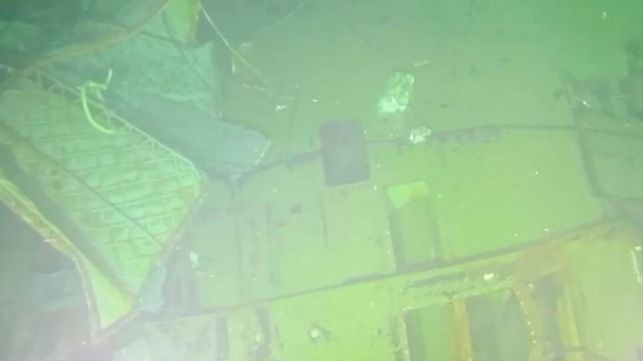China Sends Salvage Vessels to Recover Wrecked Indonesian Sub

Indonesia has accepted an offer from China's PLA Navy for assistance in raising the wreck of the submarine KRI Nanggala, which disappeared without warning during an exercise dive on April 21.
With assistance from the Singaporean sub rescue vessel MV Swift Rescue, Indonesian forces located and confirmed the wreckage of the Nanggala on April 25. A sonar survey and an ROV dive determined that the hull of the sub was broken into three pieces; given the depth of the site, the Indonesian Navy suggested that the damage was consistent with crushing under extreme pressure. All 53 members of her crew are presumed dead.
Indonesia's government has expressed a desire to salvage the wreckage of the sub - a daunting task given its location in 3,000 feet of water. Far less complex salvage operations at shallower depths bring significant costs.
"Bringing some 1,300 tonnes of metal back to the surface from a depth of more than 800 meters remains a formidable proposition. Only a handful of salvage organizations would even be capable of such a task," wrote James Goldrick, adjunct professor of naval and maritime strategy at Australian National University. "Furthermore, there is no guarantee the specific cause of the disaster will ever be discovered."
Indonesian officials suggested that they would request the assistance of other nations to help with the wreck recovery effort, and China answered the call. The Indonesian Navy confirmed on Saturday that three Chinese salvage and sub rescue vessels are under way to the location of the wreck site in the strategic Lombok Strait.
A Chinese salvage mission would have benefits for Indonesia on a cost basis, but it would also further China's national security objectives, a Chinese defense source told state-run Global Times. The salvors will have an opportunity to "study the maritime military geography of the area where the submarine was wrecked, as well as expanding the international cooperation and influence of our navy in submarine rescue and salvage," the source told Global Times.
The cause of the sinking is not known, but two senior Indonesian officials told The Straits Times that it is possible that the sub was dragged down below its crush depth by an internal wave. Lombok Strait is known for its internal waves, powerful subsurface currents driven by ocean layers and tides which can sweep through the water column in ocean channels. They are potentially deadly for submarines, as they can pull a layer of water (and its contents) down to great depths - or force it suddenly upwards towards the surface. The Strait of Gibraltar is also known for its strong internal waves; at least one submarine casualty in that region has been attributed to the phenomenon.
KRI Nanggala was a Type 209 diesel-electric attack sub, one of many built by Howaldtswerke-Deutsche Werft (now ThyssenKrupp) in Kiel between the 1970s and the mid-2000s. The class was developed specifically for export, and more than 60 were built and sold to 13 nations, including two for Indonesia. KRI Nanggala was delivered in 1981, and she underwent an overhaul and modernization period at DSME in 2012.
